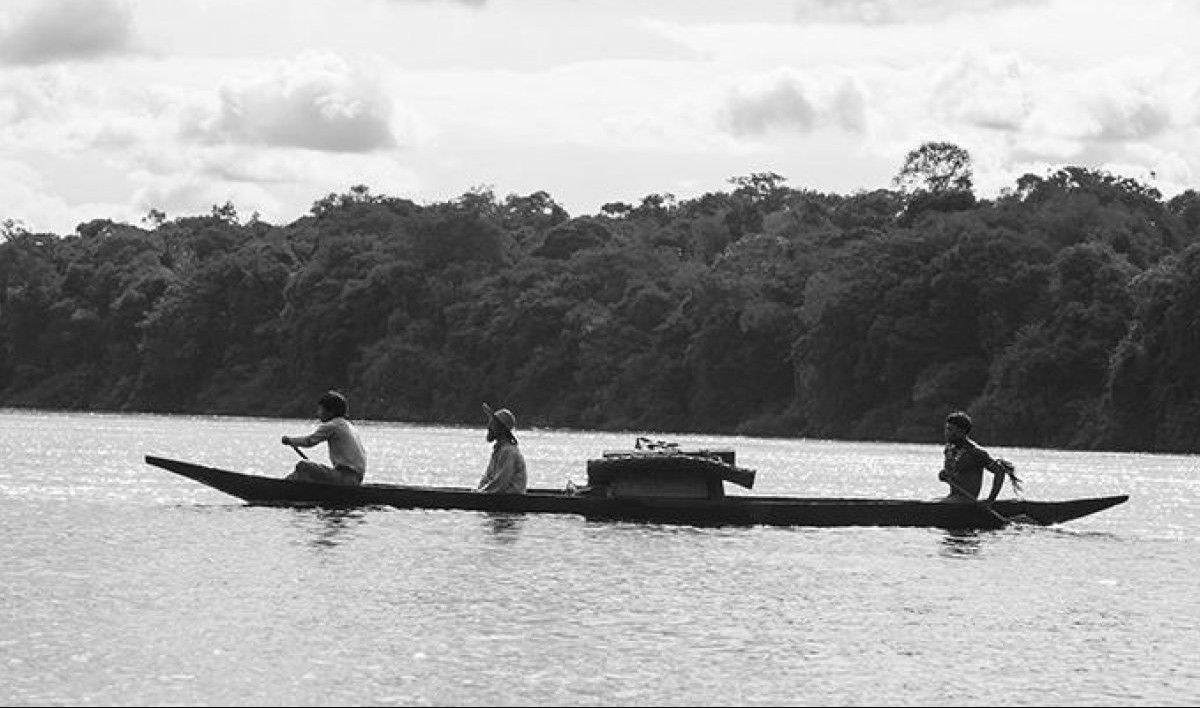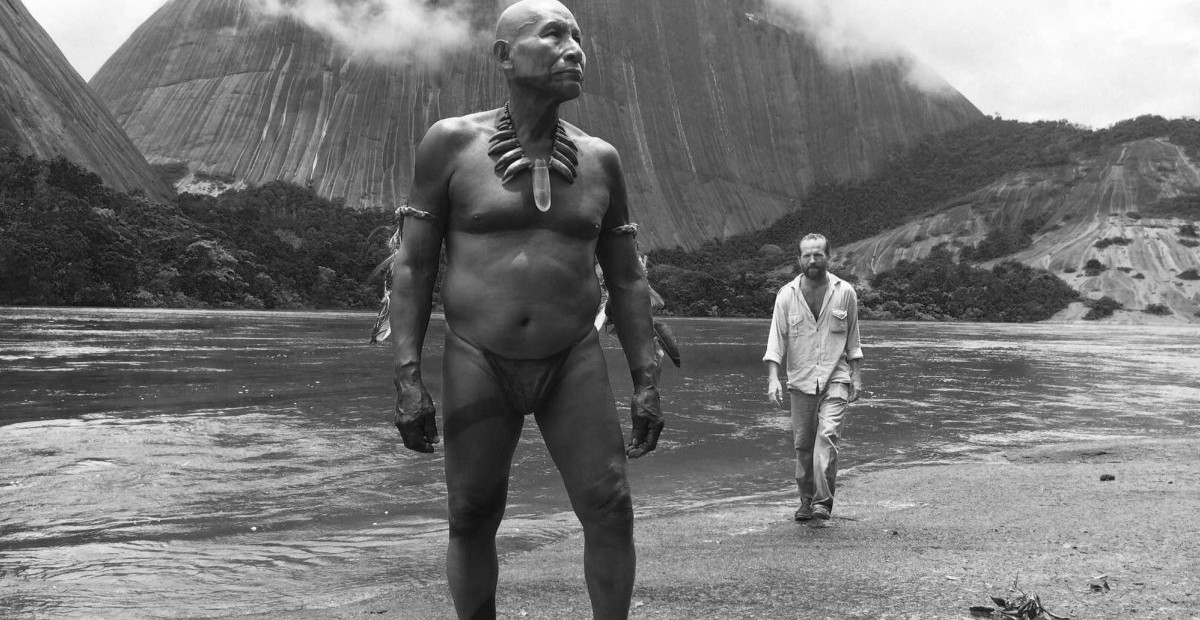By Asha New
Director: Ciro Guerra
A truly surreal experience, Ciro Guerra’s Embrace of the Serpent is based on the accounts and experiences of two explorers and ethnologists: Theodor Koch-Grunberg (1872-1924) and Richard Evans Schultes (1915-2002), as they traverse the Amazonian rainforest looking for the Yakruna plant. In both timelines they are accompanied by Karamakate, an Amazonian native and the last of his tribe, who leads these men to this sacred plant, which has acted as a symbol of reverence and independence for his tribe for many years.
The entirety of the film was shot on location, in the Amazon rainforest. Exploring and travelling through this mostly unknown land is difficult enough but shooting and acting out a whole two-hour movie there is pretty unbelievable. The risk proves rewarding for the audience: the massive landscape shots of the tree line and the Amazon River, and the close-ups of plants and rapids; all of it is rich and intense and pretty damn visually extraordinary. Throughout, the film is able to touch upon both the beauty and horror of this world – which is only elevated by the black-and-white filming and the location where it is set – whilst also keeping firmly grounded in the harsh reality of humanity, due to the characters and the fact that its events are based on true accounts.
The film follows the separate journeys of Theodor in 1901 and Evans in 1940, both searching for the sacred Yakruna plant; Theodor to cure himself from Malaria and Evans for research and historical accountability. There are few recurring characters, yet all get sufficient screen time to enable the viewer to feel invested in both their past and their current journey. The only continuation between the two stories is the shaman, Karamakate, who lives in vivid anger of the white “˜invaders’ who destroyed his tribe and thereby their link with the Yakruna. Through its leads, the film is able to explore many contextual issues such as the divisions between the natives and the white invaders, and how this impacts the various tribes in the rainforest.

Throughout the film, the respective natures of Karamakate, Theo, Evan and Theo’s companion Manduca are revealed, uncovering their weaknesses and inner changes. In this strongly character-focused work, we follow the physical journeys of these explorers and their guides whilst also seeing how the interactions between them affects their mind-sets and opinions. Various elements – including Manduca’s background as a rubber plantation worker, Theo’s stopover at a Catholic Mission, and Karamakate and Evans’ divided thoughts on the fate of the cult they encounter – all serve to both provide context to the journey of these characters and force exploration of their ideals and principles. The decisions that these characters make and the effect of their actions may be right or wrong, but they are very clearly influenced by their past experiences, allowing the viewer to really delve into these characters and what this voyage means to them.
Embrace of the Serpent is one of those rare films that walks a fine line between a mysterious and dangerous dream and a harsh yet beautiful reality of the world we live in. It is visually stunning and wonderfully written, with raw and emotive dialogue between characters. The context it brings across is an unwritten history that focuses on the divisions between two cultures and the opinions of those who explore or apparently invade this land. The focus on rubber plantations, Christian missionaries and the continuation of native Amazonian culture provide solid examples of the contextual and historical links conveyed in the film, allowing Guerra to retain a link with reality, so that the feature doesn’t lose itself within the dream-like state it can sometimes portray.
Watch Embrace of the Serpent on FilmDoo.com. (UK & Ireland only)








